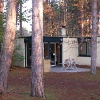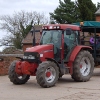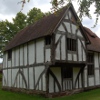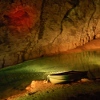Black Country Living Museum
20 January 2010
I've been to the Black Country Museum quite a lot so I was surprised to find I hadn't actually created a review for the WatkissOnline Baby and Children pages. This has however worked in the favour of the museum as they have made some improvements recently which mean this is a more favourable review than if I'd created it after a previous visit. The museum has always been good when I've visited, but there were some little things that could have been better.
The Black Country Living Museum is a large predominately open-air museum depicting parts of a village within the black country area (Dudley and surrounding area). The museum is predominately based on the 1910s to the 1930s. You can walk along the roads and pavements and then enter many of the houses, shops and workshops. Some of the shops actually sell the traditional goods including hand-made sweets from the sweet shop, a bakery selling traditional style cakes and even hats from the men's clothing shop. There are also the favourites of traditional fish and chips cooked in beef dripping and traditional ales from the pub.
For an open-air museum involving old buildings it is quite easy to get around with pushchairs. The one building that I struggled with was getting the pushchair into the Workers Institute although I believe it would have been easier to use the rear entrance, but i didn't realise that at the time. The museum recommends that sturdy footwear is worn due to the uneven nature of the cobbled streets and other areas.
There are plenty of choices for food at the museum. There is a cafe within the main entrance building, a canal-side cafe and a fish and chip shop. In the past there was only limited shelter for eating your own food (or food from the fish and chip shop), although I believe that has now been addressed by allowing visitors to use the hall of the worker's institute. The fish and chip shop is always popular and often has a very long queue outside. There is now a second larger fish and chip shop in the 1930s high street. I expect that this will help reduce the queues somewhat and I hope that they open both at the busiest times, although I'm not sure whether it will be cost effective for them to do so.
There are modern toilet facilities including baby changing in the main entrance. There are also toilets and baby changing at the canal side cafe, but they draughty and cold during the winter. The worker's institute has a modern toilet block which provides good baby changing facilities in the central part of the museum.
Our daughter's favourite part of the museum is the school building, where you can participate in a old fashioned school lesson including reciting the times-tables and writing on the slate tablets.
There is a tram that runs up and down the main hill in the site as well as electric trolley buses which run on Sundays. There are also special events throughout the year including the Great War Society providing an insight into the 1914s military. See photo gallery of the Black Country Living Museum, including Great War Society.
There are lots more to do and see, but I'll leave you to discover those on the Black Country Living Museum web site or by visiting the museum. There is just one more thing that highlights the importance of the museum. Part of the entrance building has been transformed into a hands-on exhibit which is great for children. One of the items is a case study of the new 1930s fish and chip shop which explains how they had to have many of the tiles recreated after the originals were destroyed by vandals that tried unsuccessfully to prise the tiles off the wall to steal them. Fortunately the museum has been able to recreate the original interior, but this is a piece of local history that could have been lost for ever if it were not for the museum.
The admission fee is fairly reasonable and is free for under-fives, which is a bonus as many attractions now charge for much younger children. If you are a UK tax payer then you can gift-aid the donation which gives unlimited return visits for 12 months. This is great as you could easily spend two days to see all the exhibits (especially if you include a trip on the canal boat - not part of the museum and has it's own fee). It also allows a return at another date eg. during summer as the fairground was not open when we visited in winter.
I highly recommend the museum as a great place to visit and get a real feel for our history.











 Days Out Diary Facebook page
Days Out Diary Facebook page @DaysOutDiary on Twitter
@DaysOutDiary on Twitter